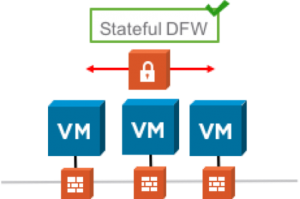Featured Interview: Sonus’ Kevin Riley Discusses Cloud-Based Communications
 Kevin Riley, senior vice president of engineering and CTO of Sonus Networks, shares his insights on cloud-based communications.
Kevin Riley, senior vice president of engineering and CTO of Sonus Networks, shares his insights on cloud-based communications.
 Kevin Riley, senior vice president of engineering and CTO of Sonus Networks, shares his insights on cloud-based communications.
Kevin Riley, senior vice president of engineering and CTO of Sonus Networks, shares his insights on cloud-based communications.
 Caught between 4G and 5G.
Caught between 4G and 5G.
Looking backward at last week or forward into next week.
The post Unregenerate – The Week Gone By or To Come – 20160725 appeared first on EtherealMind.
 Fund will help supplement private R&D budgets.
Fund will help supplement private R&D budgets.
 ONF promotes commercial adoption of SDN.
ONF promotes commercial adoption of SDN.
 The combination of new network hardware acceleration techniques and SDN is driving a new era of networking.
The combination of new network hardware acceleration techniques and SDN is driving a new era of networking.
 Welcome to part 3 of the Micro-Segmentation Defined – NSX Securing “Anywhere” blog series. This installment covers how to operationalize NSX Micro-Segmentation. Be sure to check out Part 1 on the definition of micro-segmentation and Part 2 on securing physical workloads with NSX.
Welcome to part 3 of the Micro-Segmentation Defined – NSX Securing “Anywhere” blog series. This installment covers how to operationalize NSX Micro-Segmentation. Be sure to check out Part 1 on the definition of micro-segmentation and Part 2 on securing physical workloads with NSX.
This blog covers the following topics:
Micro-segmentation design patterns
Micro-segmentation can be implemented based on various design patterns reflecting specific requirements. The NSX Distributed Firewall (DFW) can be used to provide controlled communication between workloads independent of their network connectivity. These workloads can, for example, all connect to a single VLAN. Distributed logical switches and routers can be leveraged to provide isolation or segmentation between different environments or application tiers, regardless of the underlying physical network, as well as many other benefits. Furthermore, the NSX Edge Service Gateway (ESG) can provide additional functionality such as NAT or load balancing and the NSX Service Insertion framework enables partner services such as L7 firewalling, agent-less anti-virus or IPS/IDS applied to workloads that need additional security controls.

Figure 1: Leveraging the DFW to provide Continue reading

In this third post in the series about microservices, I’ll finish building my main application so that I can demonstrate a microservices-based application in action, albeit for a very basic set of functions. This post may be a little go-heavy in places, but bear with it and I’ll get to the demo soon enough. It doesn’t really matter what language is being used; I just used go because it’s good practice for me.
As a reminder, the main application will need to accept two numbers on the command line then will need to multiply the two numbers and then square that product. The two mathematical functions (multiply and square) are now offered via a REST API, and each one has its own separate Docker container with apache/PHP to service those requests.
I have created hostnames for the two microservice containers (DNS is the only smart way to address a microservice, after all) and they are accessed as:
multiply.userv.myapp:5001square.userv.myapp:5002The API path is /api/ followed by the name of the function, multiply or square, and the values to feed to the function are supplied as the query string. Most APIs tend Continue reading
The post Worth Reading: How Facebook makes you miss out on life appeared first on 'net work.
Some technology trends get their start among enterprises, some from hyperscalers or HPC organizations. With flash storage, it was small businesses and hyperscalers who, for their own reasons, got the market growing, drawing in engineering talent and venture capital to give us the plethora of options available on the market today. Now, the big customers are ready to take the plunge.
It is no coincidence, then, that Pure Storage has architected systems that scale to multiple petabytes of capacity to meet their needs. Large enterprises with pressing demands for scaling in terms of both performance and capacity need a different …
A Thirst For Petabyte Scale All-Flash Arrays was written by Timothy Prickett Morgan at The Next Platform.
Weigh these factors when building a backup plan for your data center.
A great EVPN overview and detailed walkthrough from a colleague of mine… Nice and clear.
So I decided to take a deep dive into eVPN, I’ll mostly be looking into VLAN-aware bundling, as per RFC 7432 – and mostly because I think this will fit more closely, with the types of deployments most of the customers are used to – good old IRB interfaces and bridge-tables!
As everyone knows, VPLS has been available for many years now and it’s pretty widely deployed, most of the customers I see have some flavour of VPLS configured on their networks and use it to good effect – so why eVPN? what’s the point in introducing a new technology if the current one appears to work fine.
The reality is that multipoint layer-2 VPNs (VPLS) were never quite as polished as layer-3 VPNs, when layer-3 VPNs were first invented they became, and still are the in many cases the “go to” technology for layer-3 connectivity across MPLS networks, and…
View original post 4,444 more words